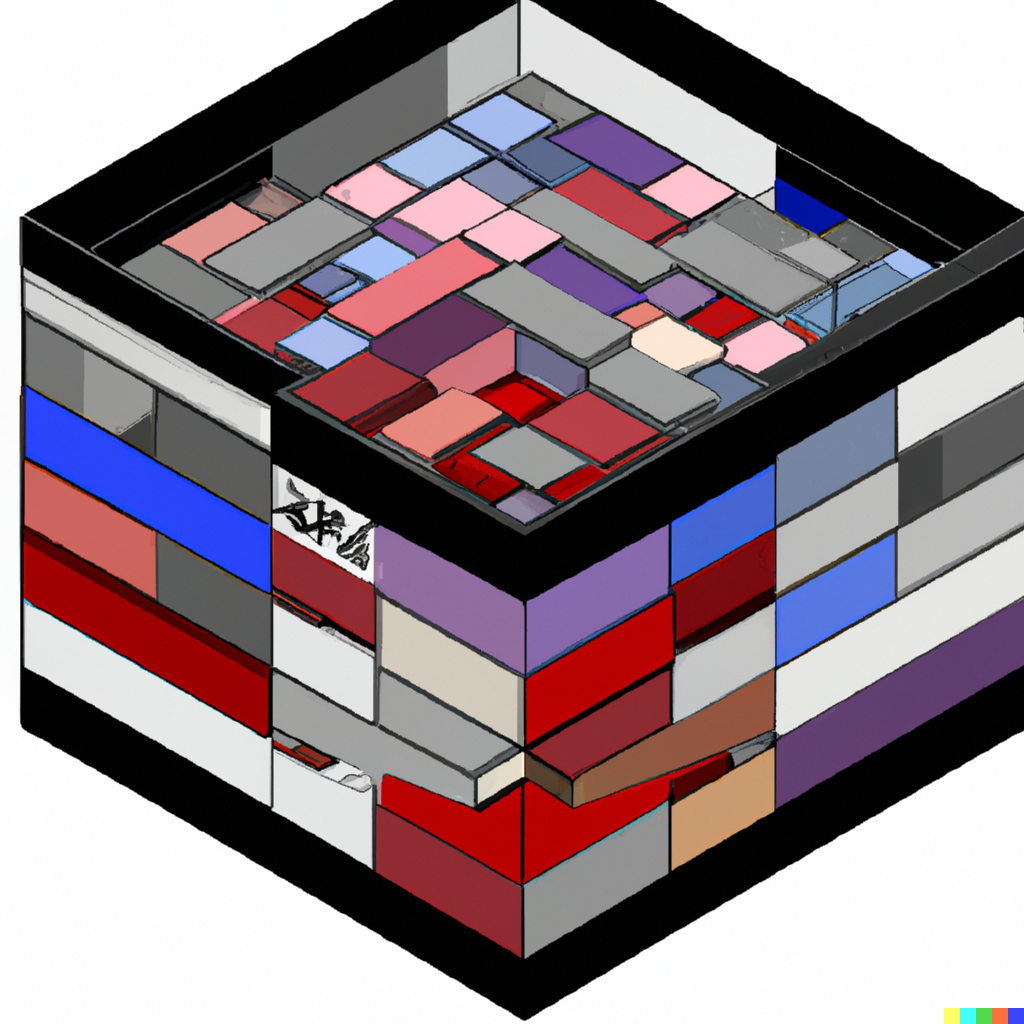Vector Databases
By: A Staff Writer
Updated on: Jun 13, 2023

A comprehensive overview of Vector Databases which power AI/ML, including definition, how they work, differences with other databases, use cases, evaluation criteria, and best implementation practices.
In recent years, enterprises have started to shift towards using vector databases for a variety of reasons. Vector databases are a type of database designed to handle complex mathematical calculations and algorithms involved in machine learning and artificial intelligence systems. This article will explore what vector databases are, why enterprises need them, and their advantages and disadvantages. We will also delve into the various use cases for vector databases, important evaluation criteria, and the best practices for implementing them.
What are Vector Databases?
Vector databases are a type of database that specializes in handling large amounts of complex vector information. These data sets are particularly useful in machine learning and artificial intelligence, where they help analysts and data scientists calculate distances, angles, and similarities to make predictions, classifications, and recommendations.
Vector databases are designed to store and manage large amounts of data compared to traditional databases. They are optimized for handling complex data structures like vectors, matrices, and tensors. This makes them ideal for handling data from sources such as sensors, images, and audio recordings, which can be represented as vectors.
Vector databases are used in various applications, from recommendation systems to fraud detection. For example, in a recommendation system, a vector database can be used to store information about users and items. Each user and item is represented as a vector, and the similarity between vectors is used to make recommendations. Similarly, in fraud detection, a vector database can be used to store information about transactions. Each transaction is represented as a vector, and the similarity between vectors is used to detect anomalies.
Vector databases are also used in natural language processing, where they are used to represent words and documents as vectors. This enables algorithms to analyze and compare text data, making it possible to perform tasks such as text classification, sentiment analysis, and language translation.
In summary, vector databases are a powerful tool for handling complex data structures in machine learning and artificial intelligence. They enable analysts and data scientists to explore vast amounts of data and make informed decisions based on the insights generated.
Why Enterprises Need Vector Databases
Enterprises increasingly adopt artificial intelligence and machine learning solutions to improve their decision-making processes. Vector databases are critical elements in realizing the potential of these systems. Organizations need vector databases to reason, find patterns, and make predictions based on the vast amounts of data they collect. Compared to traditional databases, vector databases enable organizations to generate insights that would otherwise be impossible or extremely time-consuming.
One of the key benefits of vector databases is their ability to store and manipulate high-dimensional data. Traditional databases struggle with data that has many dimensions, such as images, audio, and video. On the other hand, Vector databases are designed to handle these types of data and can perform complex operations on them quickly and efficiently.
Another advantage of vector databases is their ability to perform similarity searches. In many applications, it is important to find data points that are similar to a given query point. For example, a retailer may want to find products that are similar to the ones a customer has purchased in the past. Vector databases can perform these searches much faster than traditional databases, making them ideal for real-time applications.
Vector databases are also highly scalable. Organizations need a database that can grow with them as they collect more data. Vector databases can be scaled horizontally across multiple machines, allowing organizations to store and process vast amounts of data without sacrificing performance.
Finally, vector databases are essential for applications that require real-time processing. Decisions must be made quickly in many industries, such as finance and healthcare, to avoid negative consequences. Vector databases can process data in real-time, enabling organizations to make decisions faster and more accurately.
In conclusion, vector databases are critical for enterprises using artificial intelligence and machine learning solutions. They offer many advantages over traditional databases, including storing and manipulating high-dimensional data, performing similarity searches, scaling horizontally, and processing data in real time. As more organizations adopt these technologies, the demand for vector databases will continue to grow.
How are Vector Databases different than other databases?
 The primary difference between vector databases and other databases is their ability to store and manipulate high-dimensional data. Vector databases are designed specifically to handle large volumes of data and complex computations such as similarity and nearest-neighbor searches. Additionally, vector databases provide powerful indexing capabilities not found in traditional databases, allowing for more efficient data search and delivery. Other databases, however, are geared more towards transactional processing and storing and querying small-to-medium scale relational data.
The primary difference between vector databases and other databases is their ability to store and manipulate high-dimensional data. Vector databases are designed specifically to handle large volumes of data and complex computations such as similarity and nearest-neighbor searches. Additionally, vector databases provide powerful indexing capabilities not found in traditional databases, allowing for more efficient data search and delivery. Other databases, however, are geared more towards transactional processing and storing and querying small-to-medium scale relational data.
Vector databases are particularly useful in machine learning, natural language processing, and image and video processing applications. These fields often require handling large volumes of high-dimensional data, which can be difficult to store and process using traditional databases. On the other hand, Vector databases are specifically designed to handle this type of data, making them an ideal choice for these applications.
One of the key features of vector databases is their ability to perform similarity and nearest-neighbor searches. These operations are essential in applications such as recommendation systems, where the goal is to find items that are similar to a given item. Vector databases can perform these operations much more efficiently than traditional ones, making them an ideal choice for these applications.
Vector databases also provide powerful indexing capabilities that allow for more efficient data search and delivery. These indexing capabilities are particularly useful in applications such as search engines, where the goal is to find relevant information based on a user’s query quickly. Traditional databases can struggle with these types of applications, but vector databases are specifically designed to handle them.
In summary, vector databases are a specialized type of database that are designed specifically to handle high dimensional data. They provide powerful indexing capabilities and are particularly useful in machine learning, natural language processing, and image and video processing applications. A vector database may be the ideal choice for your application if you are working with large volumes of high-dimensional data.
Top Use Cases for Vector Databases
The uses of vector databases cut across several industries. They are applied in marketing, cybersecurity, healthcare, and financial services. Here are some of the vector database use cases:
- Recommendation systems – Vector databases are essential in recommendation systems that rely on machine learning and artificial intelligence. The databases search for similar items or users and identify patterns that the algorithms use to make recommendations. For instance, a music streaming service may use vector databases to recommend songs to users based on their listening history and preferences. The system would analyze the user’s listening behavior and identify patterns such as genres, artists, and song attributes that the user prefers. It would then search for similar songs or artists in the vector database and recommend them to the user.
- Object detection – Object detection systems use deep learning to recognize and locate objects. Vector databases store and manage the high-dimensional vector representations of these objects, making it easier for the detection systems to identify them. For example, a self-driving car uses object detection systems to identify and avoid obstacles on the road. The car’s cameras capture images of the road and surrounding objects, which are then processed by the object detection system. The system uses vector databases to match the objects in the images with those in its database, such as traffic signs, pedestrians, and other vehicles.
- Image retrieval – Vector databases are crucial in image retrieval systems that require similarity search algorithms to match query images against a database of images. For instance, a search engine may use vector databases to find images that match a user’s search query. The system would analyze the query image and extract its features, such as colors, textures, and shapes. It would then search for similar images in the vector database and retrieve them for the user.
- Fraud detection – Fraud detection systems use vector databases to compare transaction details with those of fraudulent activities previously recorded in the database. The system would analyze the transaction details, such as the amount, location, and time, and compare them with those of known fraud cases in the vector database. If the system finds a match, it may flag the transaction as suspicious and alert the relevant authorities. For example, a credit card company may use vector databases to detect fraudulent transactions by comparing them with those of previous fraud cases.
Vector databases have numerous other use cases, including natural language processing, sentiment analysis, and anomaly detection. They are becoming increasingly popular as organizations adopt machine learning and artificial intelligence technologies to improve their operations and services.
Vector databases are a type of database that are designed to handle complex data with efficiency and accuracy. They are becoming increasingly popular among organizations due to their ability to handle high-dimensional data and provide accurate analysis, pattern, and anomaly detection capabilities. However, like any technology, vector databases have pros and cons that organizations must consider before adopting. One of the main advantages of vector databases is their ability to handle huge amounts of complex data. This makes them ideal for organizations that regularly deal with large amounts of data. They also offer improved performance and scalability compared to traditional databases, which can be especially beneficial when working with high-dimensional data. Another advantage of vector databases is their accurate analysis, pattern, and anomaly detection capabilities. This is particularly useful for organizations that need to identify trends and patterns in their data to make informed business decisions. Organizations can quickly and accurately analyze their data with vector databases to gain valuable insights. However, there are also some disadvantages to using vector databases. For smaller organizations, the cost of hiring an experienced team to manage the database can be prohibitive. Integration with legacy systems may also be challenging, as specific data types or formatting protocols may be required. Additionally, vector databases require specific hardware and software to support vector processing, which can be expensive and complex to set up and manage. Overall, vector databases offer many benefits to organizations that need to handle complex data. However, it is important to consider the pros and cons before adopting this technology to ensure it is the right fit for your organization.
Top Criteria for Evaluating a Vector Database.
Choosing a suitable vector database involves more than selecting the most popular one. Here are some criteria companies can use to evaluate the suitability of the vector database:
- Scalability and performance: Knowing the upper limits of what a vector database can handle and how quickly it can process requests is essential.
- Indexing capabilities: A vector database’s indexing capabilities determine how fast the database can search for and extract data.
- Storage options: Since vector representations can be very huge, a vector database must provide viable options for storing them effectively.
- Data handling flexibility: Enterprises must know whether a vector database can handle different data types, integrate with different formats, and support various indexing structures.
- Vendor support: optimal systems may not always fit a company’s needs, so they must rely on support from the vendor. So, it is essential to consider the quality and responsiveness of vendor support.
Vector Database Implementation Best Practices
 Implementing a vector database is a significant undertaking that requires careful planning and execution. Vector databases are a database optimized for storing and processing large amounts of vector data. Vector data is a type of data that represents spatial or geometric information, such as maps, satellite images, or 3D models.
Implementing a vector database is a significant undertaking that requires careful planning and execution. Vector databases are a database optimized for storing and processing large amounts of vector data. Vector data is a type of data that represents spatial or geometric information, such as maps, satellite images, or 3D models.
Here are some implementation best practices to consider when implementing a vector database:
- Understand your data requirements – Before acquiring any vector database, it is essential to understand the required data type and how it will be stored and processed. This involves identifying the size of the data, the complexity of the data, and the frequency of updates. Understanding these requirements will help you select the most suitable vector database.
- Pick the most suitable vector database – Matching the most suitable vector database to a company’s requirements is essential. Several types of vector databases are available, each with its strengths and weaknesses. Some popular options include PostGIS, MongoDB, and Cassandra. This involves analyzing the budget, storage, and speed requirements.
- Choose the right hardware – To take full advantage of vector database capabilities, selecting hardware dedicated to vector processing may be necessary. This hardware should be optimized for handling large amounts of data and have a high-speed connection to the vector database. Some popular options include NVIDIA GPUs and Intel Xeon processors.
- Train and hire data experts – Having staff with expertise in data management, artificial intelligence, and machine learning can help squeeze the most out of vector databases. These experts can help optimize the database for performance, develop custom algorithms to process the data and identify new use cases for the data.
- Plan for scalability – As your business grows, so will your data requirements. It is essential to plan for scalability when implementing a vector database. This involves designing a database architecture that can handle increased data volumes and selecting hardware that can scale with your needs.
- Ensure data security – Vector databases can contain sensitive data, such as customer information or trade secrets. It is essential to ensure your vector database is secure from unauthorized access. This involves implementing access controls, encrypting sensitive data, and regularly monitoring the database for unusual activity.
By following these best practices, you can ensure a successful implementation of a vector database that meets your business needs and provides valuable insights into your data.
Vector databases are necessary for any organization that wants to remain competitive in its data analytics and machine learning practices. They provide a more efficient way of handling high-dimensional data than traditional databases and enable precise analysis, pattern, and anomaly detection. Choosing a suitable vector database involves considering the scalability and performance, indexing capabilities, storage options, data handling flexibility, and vendor support. Implementing a vector database requires proper planning and involves understanding data requirements, picking suitable vector databases, choosing the right hardware, and hiring experts who understand data management, artificial intelligence, and machine learning.